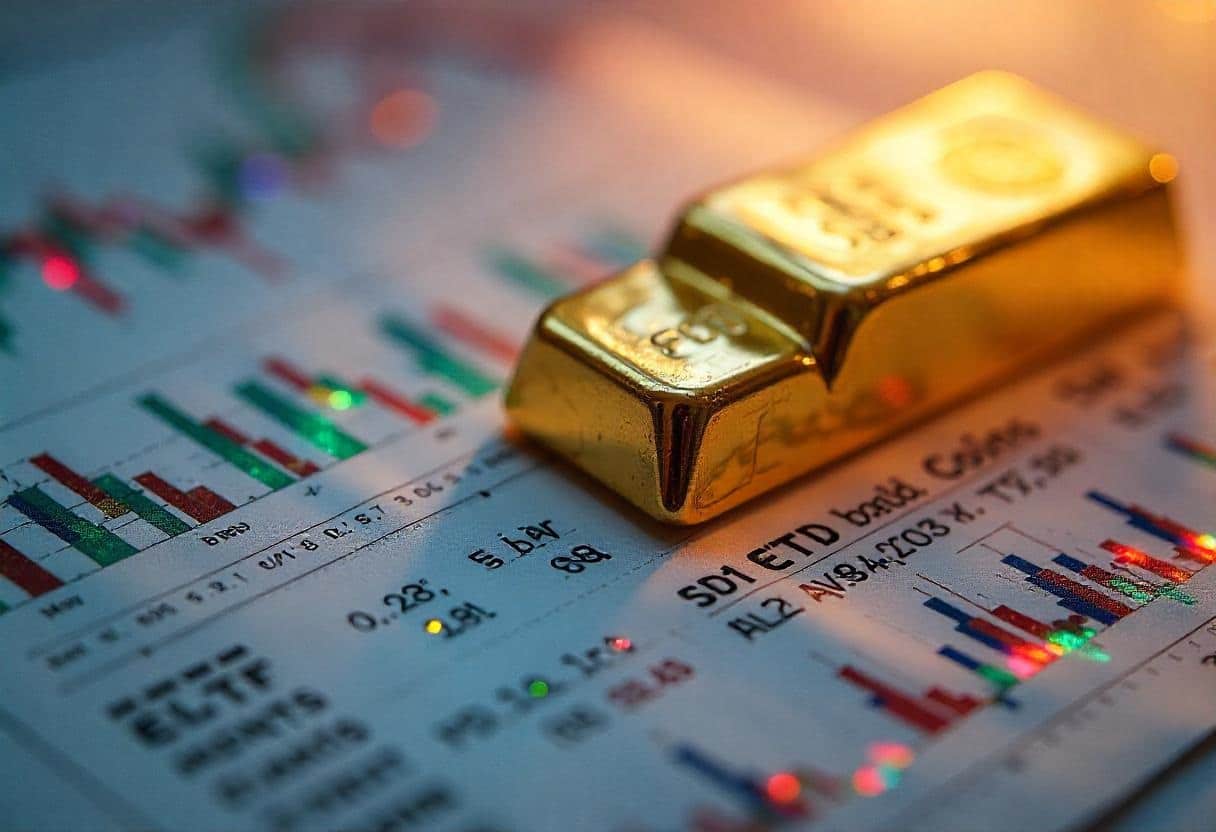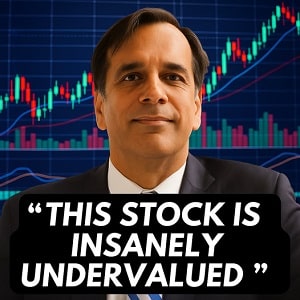Investors now wonder if gold stands as the best safe haven given rising global instability. The secure investment of wealthy purchasers depends on gold because it provides both security and enduring value preservation.
Introduction
Wealthy investors now direct their investments toward long-term financial security instead of pursuing risky short-term opportunities because of the unstable condition of the global financial market. The demand for secure assets strengthened because economies struggle to manage inflation together with unexpected interest rate changes alongside geopolitical uncertainties. Among numerous wealth protection alternatives, gold distinguishes itself because its value maintains usefulness for all time periods.
Gold maintains its status as an established protection strategy for financial challenges which arise from economic breakdowns and devalued currencies as well as market failure events. High-net-worth investors in 2025 intensify their asset selection toward safe storage solutions which fight against market dips and protect purchasing value because of worldwide economic instability. Experts must determine whether gold currently holds the position as the best defensive asset for high-net-worth investors.
This research investigates gold storage methods as financial reserves by analyzing alternative protective assets and reviewing performance patterns alongside the reasons which influence wealthy investors to maintain their trust in metal assets for portfolio security. The comprehension of gold’s changing value status in 2025 stands critical for investors to make enduring financial choices because they need it to gain information about resilient investments.
What is a Safe Haven Asset?
Safe haven financial instruments are assets which maintain or improve their value throughout times when market instability or economic downturn occurs. Investors move their capital to safe ports during periods of investment uncertainty for both equity markets and real estate and bond sectors. Such assets function independently from typical market influences because their performance is not driven by market forces thus making them dependable during times of economic crisis.
Low-risk assets comprise the category of safe haven investments which perform independently from mainstream financial market movement. The main objective of these assets lies in protecting wealth instead of striving for substantial gain. The principal features of such assets involve security with added stability as well as instant accessibility to safeguard the financial reserves of rich investors who maintain their wealth through preservation instead of speculative activities.
Traditional safe havens consist of precious metals including gold together with the US dollar while Swiss francs take precedence and Treasury bonds issued by the United States completing this list along with real estate and select commodities in some situations. Gold distinguishes itself as the oldest standard of value since people have used it as a universal store of value for thousands of years.
Global economic recovery requires safe haven assets to become essential because of unprecedented circumstances. Market participants want to know if gold will hold its position as the top secure haven during 2025 because inflation continues to rise, and economic uncertainties persist. A complete analysis of gold’s timeless advantages over current alternatives provides the answer whether it is the top safe haven for 2025.
Historical Role of Gold During Economic Crises
Throughout history gold has developed its position as a secure investment asset. The value of gold stands solid during economic downturns during wars as well as times of inflation because it keeps its worth or increases in value during these unstable periods. At its core the enduring reliability of gold provides the answer to when investors want to know if it represents their top secure haven during critical periods.
The 2008 global financial crisis serves as a clear demonstration of how gold provided investors with protection. During the worldwide collapse of stock markets and banking system failures gold prices increased dramatically. The value of gold appreciated significantly during the period between 2007 and 2011 when it rose above $650 an ounce to reach more than $1,900 thus demonstrating its status as a secure investment for withdrawing capital.
The worldwide uncertainty caused by COVID-19 in 2020 sparked enormous interest among investors for gold purchasing. Investor activities in gold resulted in a historical peak which reached above $2,000 per ounce in August 2020. Investors of all kinds coupled with central banks and institutional entities sought to protect themselves against currency degradation while enduring economic turbulence which led to rising gold demand.
Gold demonstrated its financial dominance throughout the stagflation era of the 1970s because traditional investments proved ineffective due to the simultaneous occurrence of rising inflation and economic stagnation. Gold performed with annual double-digit gains that enabled investors to safeguard their buying capability.
The data shows that whenever uncertainty reaches its highest point gold achieves its greatest value. Gold succeeds in safeguarding money while simultaneously boosting its value, which puts it among rare financial instruments that defend against worldwide economic disturbances.
Why Wealthy Investors Prefer Gold Over Other Assets
Financial security from gold has risen in value among wealthy investors because they recognize its superior protection during periods of economic instability. Strong-money investors prefer stocks and real estate for short-term profits, but they select gold because it reduces hazardous investment risks which high-wealth individuals want to mitigate. Gold establishes itself as a dependable asset which defends value during times of economic uncertainty and functions as an important risk-reducing investment buy.
Affluent investors choose gold investment as it provides them with wealth preservation capabilities. Gold maintains its intrinsic value across all markets because its worth exceeds the debasement risks which affect fiat currencies, so it finds global acceptance. Increasing inflation rates and currency depreciations drive up gold prices so investors retain their purchasing capabilities through time. Gold becomes highly attractive during times of monetary easing or political instability because of its enduring value.
Another key factor is liquidity. The use of gold allows fast trading to cash or lending as secured assets without such large depreciation in worth. The liquid quality in gold investment makes it suitable for people who need easily accessible funds yet do not want their assets to experience equity or bond price swings. Wealth advisors direct their clients to acquire gold because they need adaptability during unpredictable times.
Privacy and ownership control also play crucial roles in why the ultra-rich favor gold. The private possession of physical gold provides investors with complete ownership control of their wealth because it exists outside banking systems and eliminates dependence on third-party risks. Physical gold avoids the risks of hacking as well as institutional default or security hacking which digital securities and assets are exposed to.
The worldwide acceptance of gold creates an opportunity to use it anywhere in the world for purchase or trade. Globally mobile investors choose gold due to its benefits as a strategic reserve for geopolitical risk protection. The unrestricted movement of capital between countries through government-free means represents a magnificent benefit for investors.
For many of the world’s wealthiest individuals, gold serves not just as an investment, but as a form of long-term financial insurance. The investment in gold functions as both protection against systemic risks and keeps wealth intact for future generations as well as providing assurance in unpredictable situations.
Comparison of Gold with Other Safe Haven Assets
The decision to safeguard investment wealth by investors during uncertain times requires them to compare gold against classic protection assets including the U.S. dollar, government bonds, real estate, and cryptocurrencies. Among these assets gold emerges superior because of its established historical reliability as well as its worldwide market demand and its separation from financial systems.
Government-backed Treasury bonds specifically use their 10-year notes as one of the most commonly chosen secure investments. These financial instruments maintain high performance during times of equity market value decrease. The assets retain vulnerability to both interest rate movements and inflationary depreciation. The independence of gold from government regulations and interest rate controls makes it strong during inflation and currency devaluation periods.
People view the U.S. dollar as a stable currency that maintains its value during global financial market instability. Central banks control the dollar’s value, and the currency becomes more volatile due to increasing debt levels and rising inflation and instability in political stability. The absence of policy manipulation makes the hedge feature of gold stand out because it remains a trustworthy store of value.
Real estate functions as a popular value storage vehicle but owners face difficulties in trading homes and pay high fees and experience price volatility patterns. The portable nature of gold allows for easy global trade at stable prices because this precious metal surpasses real estate in terms of market flexibility.
Bitcoin along with other cryptocurrencies emerged as modern digital substitutes for gold in the market. The hundreds of years of proven value preservation are a distinguishing quality that gold possesses, that crypto and real estate and other stores of value noticeably lack. Most investors will not use crypto assets as a stable safe haven because these assets are largely considered speculative and demonstrate high price volatility. The investment landscape firmly favors gold because it maintains stable prices while accepting wide recognition in institutional and retail frameworks.
Most alternative investments prove less reliable than gold during times of market instability. Gold preserves its value and sometimes appreciates in turbulent times such as high inflation and geopolitical risks and market crashes thus proving itself as the most proven safe haven asset. Neither payment promises nor central authority nor network effects are necessary for gold as an investment choice. Gold exists as a tangible scarce resource whose worldwide recognition cannot be disputed.
Wealthy as well as conservative investors choose gold as their primary defensive investment asset because of its enduring appeal regardless of modern financial instrument evolution.
Role of Central Banks in Gold Demand
Central banks use their power to significantly boost worldwide demand for gold. Foreign exchange reserves of central banks contain gold as a portfolio diversification tool that reduces their dollar-denominated investment exposure. The post-2020 period has seen China along with Russia and Turkey and India make continuous expansions of their gold reserves to protect against economic uncertainties combined with geopolitical threats.
Central banks differentiate from all other market entities through their purpose of acquiring gold assets for long-lasting defensive stability rather than short-term trading benefits. The central banks demonstrate their belief in gold because they understand its dual function as both a value-preserving asset and a protection against currency devaluation and inflation impacts. Central bank acquisitions of gold in 2022 through 2023 reached historical records while creating significant contributions to worldwide gold consumption as tracked by the World Gold Council.
Central bank investments in gold produce a constant increase in investor faith and greater stability of precious metal prices. Gold stands as a universally accepted store of value since global financial institutions actively increase their reserves because of prevailing monetary instability and expanding debt loads in the current market. Central banks embrace gold as the premier safe haven asset that extends across individual usage zones up to institutional implementation levels.
Gold’s Role in Times of War and Crisis
Throughout time gold has established its position as the most valuable asset that maintains its worth during wartime and financial breakdowns and worldwide emergencies. Gold maintains its purchasing strength unlike stock markets and paper currencies since it endures in unstable periods and occasionally surges in value during marketplace declines. The abundant strength of gold establishes it as a critical defensive asset for investment plans.
When World War II erupted government bodies along with investors shielded their wealth through gold purchases to safeguard against inflation and currency decline and political turbulence. Gold served as both a general currency exchange instrument and protection against disappearing paper money systems. Global investors sought shelter during contemporary geopolitical conflicts such as the Russia-Ukraine war and Middle East wars by increasing their demand for gold prompting market price increases.
Gold preserved its protected status while the global economy suffered downturns during the 2008 financial crisis as well as during the COVID-19 pandemic. During economic instability stock markets declined and central banks embraced expansions of their money supply yet gold prices exhibited tremendous growth. Investors moved toward practical assets that stayed disconnected from debt-bound financial organizations and politically unstable governmental powers.
Central banks tend to grow their gold reserves when economic instabilities occur. The governments of China and India together with Russia have sharply increased their long-term gold stockpiles to establish economic stability against global financial perturbations and reduce dependency on U.S. dollars.
Gold maintains its powerful status during times of crisis because it operates independently from banks worldwide and cannot be diminished by inflation while being universally recognized for its worth. When held physically gold functions as a valuable asset which world markets recognize while being unaffected by national political or financial instability.
With its role as a strategic asset gold provides stability to wealth and portfolio portfolios through unpredictable times.
How to Include Gold in a Diversified Investment Portfolio
Throughout time gold has established its position as the most valuable asset that maintains its worth during wartime and financial breakdowns and worldwide emergencies. Gold maintains its purchasing strength unlike stock markets and paper currencies since it endures in unstable periods and occasionally surges in value during marketplace declines. The abundant strength of gold establishes it as a critical defensive asset for investment plans.
When World War II erupted government bodies along with investors shielded their wealth through gold purchases to safeguard against inflation and currency decline and political turbulence. Gold served as both a general currency exchange instrument and protection against disappearing paper money systems. Global investors sought shelter during contemporary geopolitical conflicts such as the Russia-Ukraine war and Middle East wars by increasing their demand for gold prompting market price increases.
During economic crises such as the 2008 global financial collapse as well as the COVID-19 pandemic gold provisions maintained their role as a secure store of value. During economic instability stock markets declined and central banks embraced expansions of their money supply, yet gold prices exhibited tremendous growth. Investors moved toward practical assets that stayed disconnected from debt-bound financial organizations and politically unstable governmental powers.
Central banks tend to grow their gold reserves when economic instabilities occur. The governments of China and India together with Russia have sharply increased their long-term gold stockpiles to establish economic stability against global financial perturbations and reduce dependency on U.S. dollars.
Gold maintains its powerful status during times of crisis because it operates independently from worldwide banks and cannot be diminished by inflation while being universally recognized for its worth. When held physically gold functions as a valuable asset which world markets recognize while being unaffected by national political or financial instability.
Under all economic circumstances including wars and market collapses and global recessions the strategic nature of gold helps secure financial wealth while stabilizing investment portfolios and providing reassurance to investors.
The Role of Gold in Retirement Planning
Gold functions as a critical component for retirement planning because it shields investors from three key challenges of rising prices and declining currency values and economic unpredictability. The importance of protecting wealth surpasses wealth growth when people approach retirement age. The market value stability of gold makes it an ideal long-term preservation instrument which lowers investment risks for retirement funds.
The unexpected movements of interest rates and market collapses often strengthen the value position of gold which becomes beneficial to retirees’ financial stability. People looking for financial safety during their nonworking years should consider gold because it serves perfectly as a risk management tool.
Gold IRAs (Individual Retirement Accounts) continue to grow in use among retirees who are getting ready to retire as well as current retirees. Self-directed sums enable people to keep physical precious metals and approved metallic contents tax-efficiently in retirement accounts. The use of Gold IRAs gives investors a diversified portfolio which contains tangible assets that remain resistant to market uncertainties compared to standard IRAs that typically hold paper equity instruments.
Retiring individuals who want protection from currency devaluation due to government debt and inflationary policies invest in gold because it serves as a non-related asset. The value of fiat currency tends to fall opposite to how gold value rises thus preserving the purchasing power of investors.
It is vital for investors to keep their investments balanced regardless. Instead of forming the main bulk of a retirement fund, gold functions best when investors utilize it alongside dependable sources of income through bonds or annuities or dividend-yielding stocks. Based on risk tolerance and financial goals the prudent amount of gold investment in a retirement plan should range between 5–10%.
The protective role of gold shields retirees from market downturns thus protecting their quality of life. The integration of gold within retirement planning stands above being a secure investment because of its additional value and effects.
How to Invest in Gold
People who wish to invest in gold have multiple options to choose from with separate advantages for each selection and specific requirements to consider. The essential knowledge of different ways to invest in gold will benefit all investors from experienced to newcomers seeking secure options. Investors have multiple ways to invest in gold including purchases of physical assets and participation in gold-related securities. Different strategies exist for investors to obtain access to the gold market which we outline in the following sections.
1. Physical Gold: Bullion and Coins
Physical gold investment starts with purchasing gold bars or coins which constitute bullion at traditional gold markets. The investor who holds physical gold gains ownership of solid assets that provide mental peace while allowing complete control. People acquire gold bullion and coins from certified dealers together with reliable gold retailers. Physical gold investment demands security measures for safe storage at a location such as a safe deposit box.
The true ownership of physical gold over other investment types makes it an independent form of wealth that does not rely on banks or governments. Investments in physical gold do not produce any interest or dividends but they may require expenditure for storage and insurance that decreases overall profit.
2. Gold Exchange-Traded Funds (ETFs)
The investment solution of choice for those preferring liquid and convenient options to invest in gold is through gold Exchange-Traded Funds (ETFs). The stock exchange lists gold ETFs as investment funds which follow the movements of gold prices. Investors can gain gold market exposure through gold exchange-traded funds when they purchase shares of these funds without actually keeping or storing physical metal. Investors can benefit from stocking-like trading with gold ETFs to obtain hassle-free access to gold investments.
The real-time market value of gold exists in Gold ETF products but it is reduced by minimal fund management costs. SPDR Gold Trust (GLD) together with iShares Gold Trust (IAU) comprises the well-known group of gold ETFs. ETFs based on gold give investors better accessibility together with market liquidity as their key strength. Use of gold ETFs falls short of delivering both physical asset ownership and security which purchase of bullion would provide.
3. Gold Mining Stocks
Shareholders who wish to invest in gold markets should consider acquiring stock in mineral extraction companies that focus on gold extraction operations. The extraction of gold from earth enables these companies to profit from gold market rates. The stocks of gold mining companies grant investors opportunities for dividend payments and short-term price gains when companies demonstrate positive financial outcomes.
The risk profile involves high returns for investing in gold mining stocks though it subjects investors to operational difficulties and production-cost changes and geographic tensions. The efficiency with which mining companies extract and produce gold determines their gains from rising gold prices alongside their losses when prices decrease in the market.
4. Gold Futures and Options
Advanced investors choose gold futures and options as their means to invest in gold. The time-based financial arrangements enable investors to make agreements about acquiring or disposing of gold with predetermined prices on specific future dates. Through futures and options, you have the ability to control substantial amounts of gold investment using minimal capital. Financial gains from this investment approach become substantial when gold prices shift favorably yet substantial losses occur when prices move against the investor.
Investors interested in both risk management and future gold price prediction utilize gold future contracts. Professional investors with experience qualify as the only suitable group for using both futures and options because these instruments possess high complexity levels and substantial market risk.
5. Gold Certificates
The purchase of gold through a gold certificate functions as an investment option that enables investors to hold gold without full physical possession of it. A bank issues Gold certificates through which it represents ownership of stored gold reserves. The claims to vault-stored gold which investors receive through gold certificates allow them to retrieve physical gold by trading certificates for metal. Informing investors about gold prices through gold certificates requires no storage protection concerns.
Investors who choose gold certificates gain easy access to gold investments but must consider potential risks due to financial issues of the certificate-issuing institutions. The possession of real gold materials remains more tangible than gold certificates do.
6. Gold IRAs
People who want to add gold to their retirement investment collection through a gold Individual Retirement Account (IRA) can reach two benefits related to taxation. The retirement savings of investors can contain physical gold together with other precious metals through Gold IRAs. All gold IRAs must follow IRS criteria and need a designated custodian to oversee the metal assets within them.
Investors who want long-term protection against inflation together with portfolio expansion through tangible assets should choose a Gold IRA. Gold IRAs need strategic setup along with compliance to custodian administration fees along with storage fees and IRS administrative requirements.
7. Digital Gold
Some companies today introduce digital gold investments as a new approach to buy precious metals in a digital format. Digital gold gives investors access to buy and sell gold through online services which operate without the need for physical ownership or storage requirements. Small investors benefit from digital gold because they can purchase limited portions of gold through this system which shares similarities with gold ETFs.
While digital gold provides users with easy access and convenient services there are no security guarantees equivalent to physical gold storage. Digital gold users should thoroughly examine all the possible costs connected to using these services.
The Risks and Considerations of Investing in Gold
Long history has established gold as a dependable safe-haven asset because investors can depend on it to defend against inflation along with currency devaluation and worldwide unpredictable events. Investing in gold experiences both safety and prevention from various risks despite its established reputation as stable. The risks affecting gold investments require thorough examination by prospective investors who wish to include gold in their portfolios. The main elements involving danger and necessary contemplation emerge in this part to assist investors in making well-informed choices regarding their gold investments.
1. Price Volatility
The stable reputation of gold assets does not eliminate the occurrence of considerable price movements. Various elements like geopolitical events alongside inflation expectations combined with modifications in interest rates control the value of gold. Global conflicts along with changing market risk appetite toward risky assets can result in gold prices increasing. When economic growth sets in combined with increasing interest rates investors tend to redirect investments away from gold which causes its price to decrease.
Sharp price movements of gold lead to unpredictable market effects which oppose the short-term investing goals of investors. The long-time preservation of gold value has a historical basis yet short-term market movements prove unpredictable which creates risks of losses for investors who lack adequate preparation for such volatility.
2. Lack of Yield or Dividends
The payment of dividends or interest does not exist with gold investments because it is a different investment type than stocks or bonds. The value of gold exists chiefly through its price appreciation because investors depend entirely on price increases to obtain profits. The absence of earnings presents a drawback for gold as an investment because it offers no source of regular returns.
Those who depend on dividend or interest payments to meet their financial needs should avoid using gold as an investment choice. Rising inflation can diminish the actual value of investments in gold when prices of the precious metal do not increase enough to match inflation.
3. Storage and Security Costs (Physical Gold)
The storage and protection measures become crucial when buying physical gold because coins and bullion require safe accommodation. Keeping gold in personal home safes or under your residence poses significant threats because it makes the metal susceptible to illegal taking and physical destruction or total loss. People seeking safe storage of their investments usually choose bank vaults along with safe deposit boxes though banking services charge extra fees. The cost of safe storage fees for different quantities of gold can gradually decrease your investment profits throughout time.
It is important to maintain your gold in a marketable state because selling your gold at a later time depends on your ability to demonstrate a sellable condition. The value of gold falls after it receives any damage because you will need to pay to make it market ready again while the damage reduces its worth.
4. Counterparty Risk (Gold Certificates, ETFs, and Futures)
The risk of losing physical gold ownership does not exist but other investment vehicles like gold certificates and ETFs and futures contracts may expose investors to risks from the issuing entities. When financial institutions or companies fail investors holding metal certificates or exchanging funds for gold ETF shares risk losing their investment access.
The loss of financial value could happen when investors face obligational defaults from counterparties investing in gold futures. Investors should select established institutes along with trustworthy investment vehicles when they want to access gold exposure because of this potential risk.
5. Market Liquidity
The liquid nature of gold applies mostly to standard investments whereas specific forms such as rare coins and large bullion bars become less easily convertible to cash for emergency use. Before buying physical gold investors should determine both the speed of asset liquidation and potential challenges in selling the metal in case of need.
Some types of gold investments with elevated market value compared to their weight in gold make them harder to trade at reasonable prices in the market. Large-scale gold disposition encounters difficulties because not every buyer will accept or possess the capacity to acquire these extensive gold quantities.
6. Inflation Risk
The use of gold as a shield against inflation shows uncertain results despite widespread belief to the contrary. The inflation evaluation outpaces expectations that gold prices may not equitably follow these price movements. The rate of inflation sometimes overwhelms gold prices because deflationary pressures or other economic factors emerge causing prices to fall behind inflation rates.
The benefit of keeping gold in your portfolio might decrease when inflation is high since alternative investments such as stocks or real estate can yield superior returns compared to gold. Gold functions as a protection against rising prices yet investors should include it in their diverse financial plans instead of depending on it as a certain protection system.
7. Geopolitical and Economic Factors
The price of gold becomes vulnerable to major geopolitical occurrences that include wars as well as political instability and financial crises. The combination of investor panic toward gold and market price instability occurs when safety-seeking events unfold in the precious metals sector. Gold prices experience dramatic increases during periods of war and economic declines when investors buy the metal as protection but these values often revert to former levels after the situations stabilize.
Price shifts within the global economic sector triggered by central bank monetary policies and interest rate modifications and modifications to fiscal policies strongly affect gold’s market value. The investor needs to maintain constant awareness about worldwide economic and political conditions because these aspects directly affect their gold investment returns.
8. Government Regulations and Taxation
The local tax system imposes regulations on gold while governmental policies might affect the freedom of trading and investing it. Selected nations place purchase and sales tax restrictions on gold and simultaneously mandate limitations regarding private ownership of the mineral. Subjects to capital gains tax will depend on your locality when you achieve profits from selling gold.
People considering gold investments need to learn about the rules and tax requirements which regulators impose on gold ownership within their region. Not knowing and adhering to local laws regarding gold ownership can lead to sudden tax responsibilities together with legal difficulties.
9. Economic Cycles and Market Sentiment
Market movement of gold depends on the developments of economic cycles as well as changes in investor sentiment. Golden performance tends to decline when investors choose to invest in riskier stock markets alongside higher-yield alternatives during intense times of economic prosperity. Difference between economic upturns and downturns affects investors’ interest in gold where they see it as a shielding option during recessions.
The anticipated directions of gold price fluctuations do not always reflect how the market behaves. The protective role of gold investments depends on quick market changes because investors cannot consistently rely on this method as an economic safety measure during sharp market or economic condition fluctuations.
Conclusion
The reliable status of gold as a safe-haven investment becomes evident because it provides security and preservation of long-term value throughout economic and geopolitical uncertainties. The historical value of gold as wealth storage along with its protective property against inflation gives it a critical position in diversified investment portfolios.
The same disadvantages that accompany all types of investments exist for gold investments. The investment in gold faces difficulties from market price fluctuations in addition to reduced income streams and storage expenses together with limited access to cash. Those who invest in gold must take into account how economic factors and geopolitical matters shape its price value while maintaining knowledge of taxation rules and government requirements regarding gold ownership.
People interested in gold investment need to effectively position their gold investments among their total financial holdings. Using gold only to amass wealth presents poor results but investors can protect their assets through diversified portfolios by including gold as one of the components. Successful gold investment requires investors to measure potential risks against benefits so they can effectively protect their money against unanticipated future economic challenges.
During economic instabilities wealthy investors continue to think of gold as their primary protective reserve. Strategic diversification practices alongside adequate knowledge of gold investments enables investors to achieve maximum benefits from this metal while keeping their investments secure from potential risks. The evolution of the world requires investment strategies to adapt because this ensures continued relevance of gold as a fundamental tool for building financial security and maintaining wealth over extended periods.


































